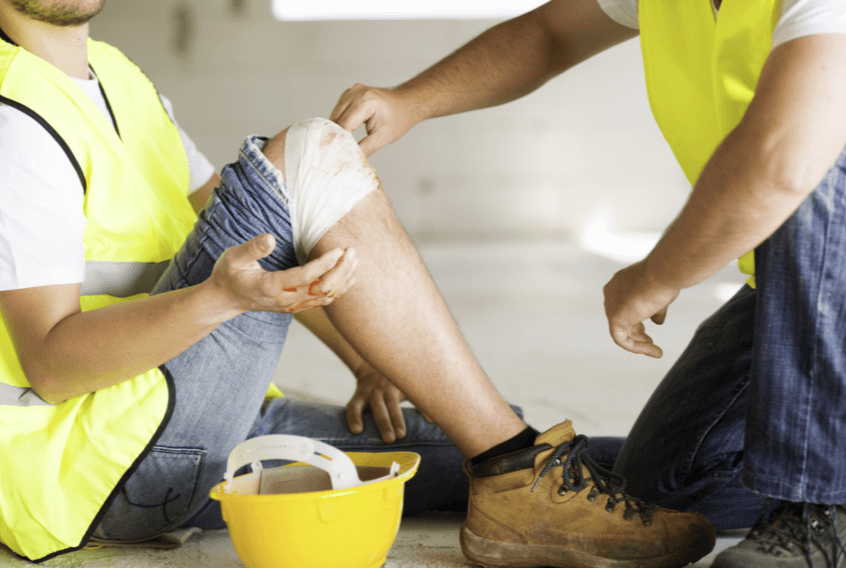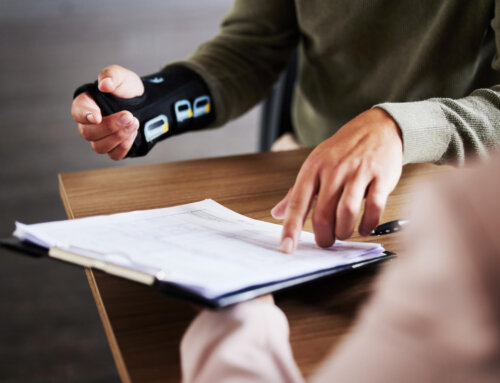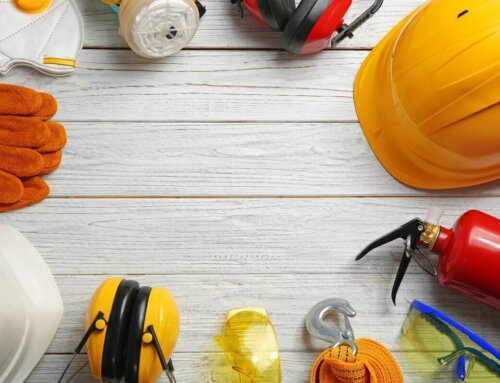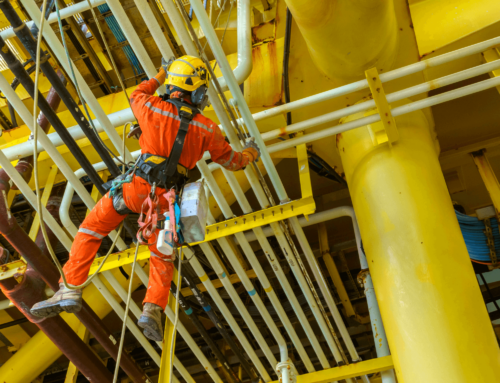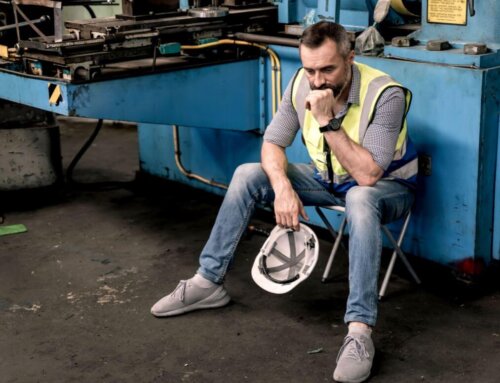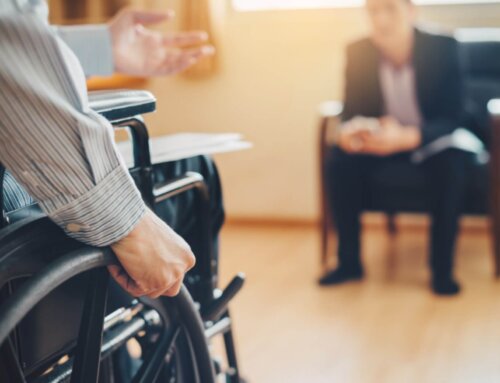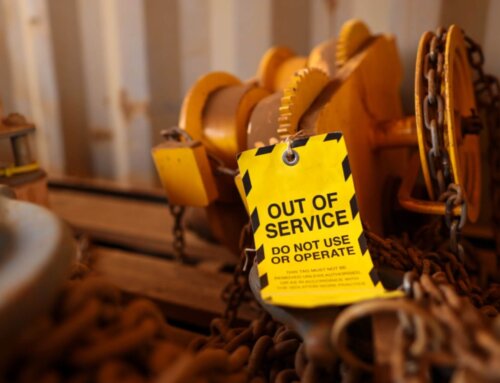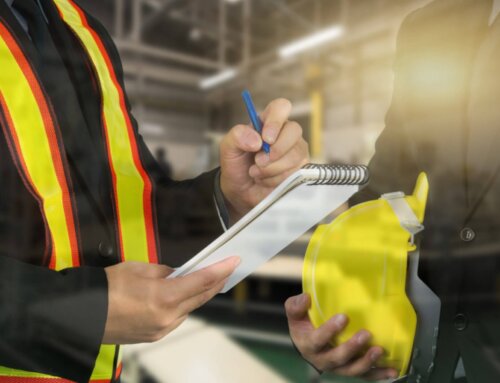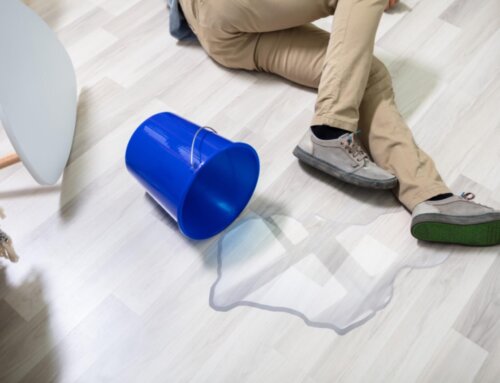Employers have a common law duty to look after their workers’ health and safety. That means that they must take reasonable care of their employees’ whilst they are at work.
Accidents at work still happen though and there are lots of them too. In the year 2019, in the UK, there were:
- 693,000 workers who self-reported that they had sustained a non-fatal injury at work
- 65,427 non-fatal injuries reported by employers
- 111 workers who sadly suffered fatal injuries in workplace accidents during the year
The term ‘accidents at work’ covers a wide spectrum of accidents However certain types of accidents at work, are more common than others.
1. Slips, Trips or Falls (on the same level)
In the last year, a whopping 29% of all reported accidents at work were down to slips, trips and falls on the same level.
By ‘on the same level’ we mean workplace accidents that happen through a slip on the floor or tripping over something that has been left on the floor.
This accident type can happen in almost any type of workplace situation. Some examples of this cause of accident are:
- Wet surfaces or where oil or other slippery substances have been spilt or left on the floor.
- Untreated icy outdoor paths, yards or other surfaces within the confines of the business premises.
- Broken, cracked or loose flooring.
- Carpets or rugs that are not properly secured.
- Provision of inadequate or damaged footwear.
- Objects that have been left on the floor.
- Uneven floor of floor at different heights
- Wires or cords left strewn across the floor.
Some types of injury that result from slip, trip and fall accidents are:
- Head injuries (caused when the head hits the floor).
- Broken bones
- Back injury
- Cuts and bruises
- Dental injuries (broken teeth)
2. Handling, Lifting or Carrying (Manual Handling Accidents)
Almost a fifth of all non-fatal accidents in 2019 were caused by manual handling accidents. This kind of accident occurs through pulling, pushing or carrying something.
Workers in occupations where manual labour is the main feature of the work involved are at risk of injury when things go wrong. Trying to lift, push or pull an object that is too heavy for an individual to safely manage, can result in neck, back, arm, wrist, leg, and ankle injuries. Back injuries are particularly common.
It isn’t though only on constructions sites or in heavy industry where manual handling accidents occur. The office worker moving a heavy box of files from one shelf to another, the bar worker repeatedly, day after day loading full trays of beer glasses into a dishwasher and nursing staff in hospitals who lift patients in and out of bed – all are at risk of suffering manual handling accidents.
Injuries caused by the gradual wear and tear on muscles, tendons, bones, ligaments and joints through the repetitive motion of some manual handling operations can lead to musculoskeletal disorders.
Safe systems of work need to be put into place by employers if they have workers who are required to carry out handling, lifting or carrying duties. They then need to enforce those safe systems of work rigorously. If they don’t and injuries in the workplace result from a failure to provide and maintain a safe system of work, the employers may find themselves facing an accident at work compensation claim brought by the injured employee.
3. Struck by a moving object
Accidents of this nature account for 13% of all fatal injuries due to accidents at work and 11% of all non-fatal injuries. Examples of this type of accident in the workplace include:
- Falling object – this might be items falling from shelves onto someone below (because the goods have been poorly stacked).
- Tools or other objects falling from scaffolding onto workers on the ground.
- Parts flying off machinery due to inadequate or damaged protective guards.
- Being hit by a swinging door – this type of injury is common in professional kitchens.
- Falling ladders
- Shopper being struck by a stock trolley in a supermarket
When objects fall from height onto someone below, serious head injuries are a likely consequence.
Occupations where there is a high possibility of something dropping from a height onto another worker, are highly regulated in an attempt to prevent this type of accident from happening. The construction industry is a prominent example of this.
Nevertheless, as the HSE statistics tell us, moving object accidents are still happening.
4. Struck by a moving vehicle
Accidents caused by moving vehicles in the workplace were responsible for 19% of all work fatalities in 2019.
Forklift truck accidents are one of the main hazards in this regard. This is another type of accident at work that should not be happening. It should not be so difficult to work out a way to keep pedestrian workers and forklifts (and other factory or warehouse vehicles) separated from each other. All the same, 19 workers met their deaths as a result of moving vehicle accidents at work in 2019.
5. Falls from Height
This type of accident accounted for a quarter of all work accident fatalities in 2019. Not all falls from height result in death. However serious injury is a likely outcome in many of these cases, with head, brain and other serious injury types often being the result.
The types of accident that would come under this heading, include:
- Construction site accidents – falls from scaffolding, ladders, partially built/demolished buildings
- Falling from a vehicle – These accidents tend to occur when a person is working at height on the vehicle e.g. carrying out maintenance or repair work.
- Roofs – a number of occupations involve working on roofs – aerial and satellite dish technicians, roofers, builders to name but a few.
- Falling downstairs
- Falls whilst working at height on machinery/plant
6. Assaulted at Work
We have included assaulted at work claims in this list of the ‘top 6 most common accidents at work”, because acts of violence were the cause of 9% of all non-fatal injuries in accidents at work in 2019, with 688,000 incidents of violence at work.
It’s a sad sign of the times when increasing numbers of workers are being assaulted during the course of doing their jobs. Alas, during the initial Covid-19 related national lockdown of March 2020, there were more than 300 prosecutions for assaults on emergency workers – police, paramedics, doctors and members of the fire service.
Other assaults at work may be caused by fellow workers. Some are caused when employees who work in a public-facing occupation are assaulted by a member of the public.
For a successful assaulted at work claim to be made against an employer the person bringing the claim will have to show that the assault was predictable. One example of proving that to be the case might be if there had been a number of similar assaults previously, but the employer had not done anything substantial to minimise the risk of further similar assaults.
Another route to compensation for the victim of a workplace assault will be by pursuing a Criminal Injuries Compensation claim
If you have suffered an accident at work, whether of the kind listed above or any other type of workplace injury, contact Mooneerams solicitors now to see whether you might be eligible to make a claim for accident at work compensation. Call us on 029 2199 1927 or contact us by leaving your details and we’ll call you back!

